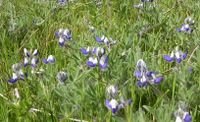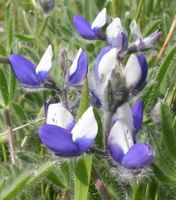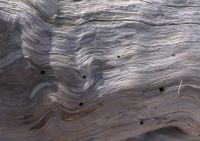"Name the 10 most beautiful birds you have seen.” An innocuous-sounding meme, right? I thought so, when
Liz tagged me yesterday. But when I sat down to actually write the list, I couldn’t. Even excluding the species from my Costa Rica trip, there are still all the North American birds. Just 10 species? How can I pick just ten?
After thumbing through my beloved, battered field guide for almost an hour, I had a bit of a problem.

Forty-seven species, and I thought I was being ruthless when I picked these. I could have made the whole list warblers. After much additional browsing and tangential reading (I love reading field guides) I came up with this list, presented here in the order they appear in the guide because I can’t rank them by “beautiful” any further than this.
great blue heron wood duck rufous hummingbird violet-green swallow varied thrush cerulean warbler blackburnian warbler hooded warblerwestern tanager painted bunting The thing is, I think every bird is beautiful. Yes, the ones on the list are colorful and showy, but there are many more just as colorful. And what about those that have beautiful voices? Or the drabber species, streaked in browns and grays and white, beautifully adapted to blend with their environment?
As I was immersed in my bird guide this evening, I discovered that I not only “collect” species names for my Life List, I collect habitats, impressions, and experiences. In trying to decide on the “most beautiful” species I’ve seen in my life, I was unable to separate the birds from the circumstances in which I had seen them. I could hardly bear to exclude a bird from my potential list of ten just because it wasn’t as showy as others.
For example, the
prothonotary warbler did not make it on my list of ten. I first saw this bird near Wilmington, North Carolina, in the creek where I did my Master’s thesis project. When I think “prothonotary warbler,” I don’t just think of a little yellow bird with a loud, sweet voice. To me, this bird evokes the memory of days spent in the green, watery, blackwater swamp of Town Creek, surrounded by cypress trees poking their knees out of the banks, and the smell of river and plants and mud. I can feel the heaviness of the moisture in the air, and the cool relief when the boat passes into the shade under the trees. Against that backdrop, I’m watching a vibrant golden bird bouncing among the cypress knees, singing its heart out.
Similarly, how can I ignore something like a
hermit thrush,
veery, or
winter wren? Not as showy, true, but breathtaking for their song. The winter wren, a tiny brown mite of a bird, perched on a dead branch with its head back and tail straight up and pouring forth arguably the most amazing song ever, is truly spectacular. The hermit thrush has a floating, ethereal, flutelike song that brings tears to my eyes. And the veery’s song sounds three-dimensional to me, spiraling down in a cone of fluting notes. I heard all three of these for the first time during Ornithology class field trips, in college in Maine, and they will forever remind me of balsam fir, red maple, and the tang of the shore as the early morning sun burns off the mist.
Common loons sound like the northern lights made audible. Heard in northern Maine during a college camping trip, it was transcendental: the loons, emerald and white aurora borealis, the lake, fragrance of balsam fir, crystalline cold air, and more stars than I’d ever seen. It was the week before my freshman year, I had four years of environmental science classes to look forward to, and I was supremely happy.
The
whip-poor-will reminds me of one specific night of a Girl Scout campout nearly 20 years ago when I was a junior in high school in Connecticut, drifting off to sleep in an open-flap tent in September with brilliant stars, cool air, a warm sleeping bag and a feeling of total contentment. Though I’ve never actually seen this well-camouflaged bird, only heard it, the sound never fails to take me back to that perfect moment.
Common eiders take me back to Seal Harbor, Maine, the summer before seventh grade. I was at a science camp and began keeping a bird list on my own, though it wasn’t one of the required assignments. I just thought that those black and white and green birds we saw on the rocks were too cool to ignore. Thus began my life as a birder.
Birding has been such a part of me for so long that I remember life events as much by the birds I saw, as by the events themselves. To have to pick favorites is almost impossible. Each bird is a marvel of color, pattern and sound, and I am always, no matter where I am, aware of the birds in the vicinity.
This is probably the most time anyone has ever spent on answering a meme, but I truly enjoyed spending an evening on it and thinking back over all the birds I've seen. I’m not going to tag anyone specific to go next, but instead I’m going to ask EVERYONE who reads this to take the time and look at a bird. Even crows are beautiful.
















